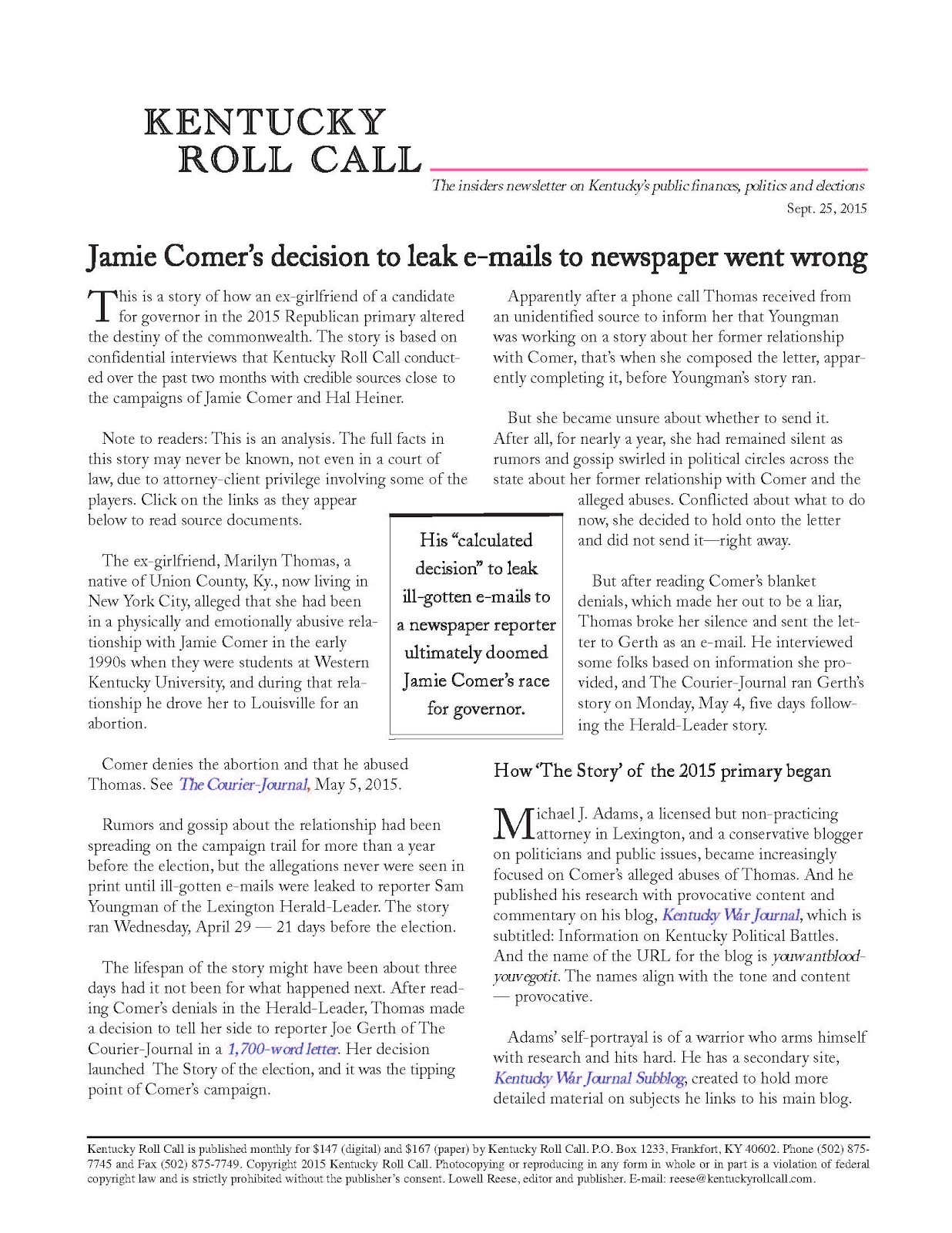We have to apply the weasel
phrase “in the neighborhood of” because, unlike public employee salaries, the
pensions records of state workers (and legislators) are strictly guarded secrets.
Therefore, we can only use the basic formula in calculating Sherman’s pension,
which is “years of service X average
salary X service credit rating (a % factor).”
If Sherman bought years of
“air time” — which means exactly like it sounds, pulling years of service out
of the air, up to five years — that would add about $20,000 each year to his
pension draw; and if he served in the military, he could count those years,
too.
All of this highlights once
again, the serious need for transparency in all of Kentucky’s six
state-administered public employee retirement systems. There is no federal law
that says the pension records must be closed. Kentucky’s records are kept
secret under a law enacted in 1972 under Gov. Wendell Ford, when governors
totally dominated the legislative branch. Four states have opened their
government employee pension records to the public: New Jersey, Ohio, Oregon and
Pennsylvania.
The three factors explained
1. Years of Service
Sherman began work at LRC in
1978 and left the institution in 1995 — giving him 17 years of service. He then
worked maybe two years in the Kentucky Department of Education, increasing his
years of service to 19. He was then hired as LRC director in 1999, serving 14
years in that capacity —giving him a career total of 33 years for pension
purposes.
2. Salary
Sherman’ salary when he
resigned was $195,000 a year. He
apparently had not received any raises since 2008, when his salary was spiked
from $132,000 to $195,000, by mainly then-Senate President David Williams,
because Sherman threatened to retire through a narrow window of a temporary law
that offered an incentive for public employees to retire early — under the
incentive, early retirees were allowed to calculate their pension using a
“Hi-3” instead of a “Hi-5” on the salary.
Negotiating a 47 percent
salary hike was a brilliant move by Sherman, and a display of disrespect for
the state treasury by Williams and the LRC leadership who went along with it —
but then that’s an honored custom of legislators, disregarding the cost of
pensions while bestowing super-rich pensions on themselves. To read more about
this, click here.
By staying on an additional
five years, with the higher salary, Sherman increased his pension an estimated
$54,000 a year for the rest for the rest of his life
3. Serve credit rating
The percentage factor we used
in calculating Sherman’s pension is 2 percent. That’s an approximation.
It is appropriate here to say
that SB 2, the pension reform bill enacted in 2013, did not solve the pension
crises, contrary to proponents' claims; state employees haven’t had a raise in
years; and education funding is in decline — and a big reason for the latter
two is, the pension cost is crowding out pay raises, and it’s also crowding out
essential government services.
Bobby Sherman could be a
“Poster Boy” for the Frankfort culture of milking the pension systems like a big
chocolate milk cow.
#





